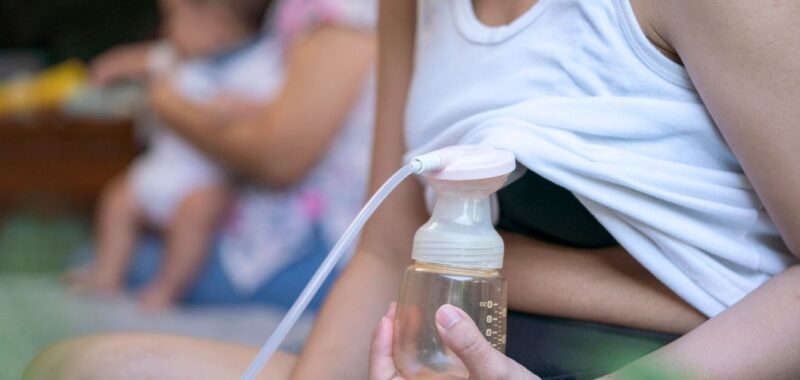According to a new study from the Yale School of Medicine, pumping could help breastfeeding mothers provide milk to their babies for longer. The study showed that people who used pumps provided human milk to their babies for 21 weeks longer than those who didn’t pump, on average. Considering both the American Academy of Pediatrics (AAP) and the World Health Organization (WHO) suggest breastfeeding children for at least two years when possible, this is promising news for parents who either struggle with lactation cessation or who can’t breastfeed because of work or other obligations.
Obviously, feeding a child is the most important thing — and there’s a whole pile of societal and systemic barriers that can prevent parents from providing breast milk (the lack of paid parental leave in the U.S. is only the tip of the iceberg).
“I encourage all [parents] to breastfeed and/or pump to provide breast milk for their babies and to give themselves grace if they can’t provide human milk exclusively for their baby,” Dr. Janelle Ferry, a board-certified neonatologist and director of feeding, nutrition and infant development at Pediatrix Medical Group, told Parents. “We are fortunate to have safe alternatives with formula. Breast milk definitely has benefits that can’t be replicated by formula, and formula will still ensure that a baby gets appropriate nutrition to grow and thrive.”
Ferry added, “I think it’s also important for [parents] to realize that any amount of breast milk they’re able to provide, including in combination with formula, provides benefits to their baby—it doesn’t have to be all or none.”
With that being said, when the Affordable Care Act mandated insurance coverage for pumps in 2012, Dr. Deanna Nardella noticed an uptick in parents using them, but had questions about the impact of that change.
“Despite the observed increase in pump use over the last decade, little is understood about how pump use actually impacts breastfeeding outcomes,” she said. “We set out to better understand the relationship between pump use and breastfeeding duration.”
Dr. Nardella and a team of researchers used data from the Centers for Disease Control and Prevention’s Pregnancy Risk Assessment Monitoring System to examine a sample of nearly 20,000 U.S. lactating people from 2016-21, assessing the prevalence of pump use and how long the people provided human milk to their children. They found that nearly 91% of the parents used a pump to extract milk, and that those who pumped at any point reported lactating an average of 21 weeks (five months) longer than those who didn’t pump.
Additionally, pump use was linked to a 37% lower risk of lactation cessation on average. This was especially significant for non-Hispanic Black and Native American parents, who have the lowest lactating rates in the country, according to the team’s research.
The biggest question that remains unanswered by this study?
“We cannot infer that this relationship is causal, meaning that pump use directly causes longer breastfeeding durations,” Dr. Nardella said.
Still, experts aren’t surprised by the results, and Dr. Nardella hopes the study will increase awareness and encourage more parents to seek out breast pumps through their insurance.

